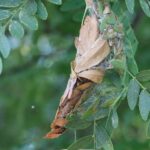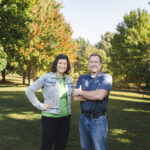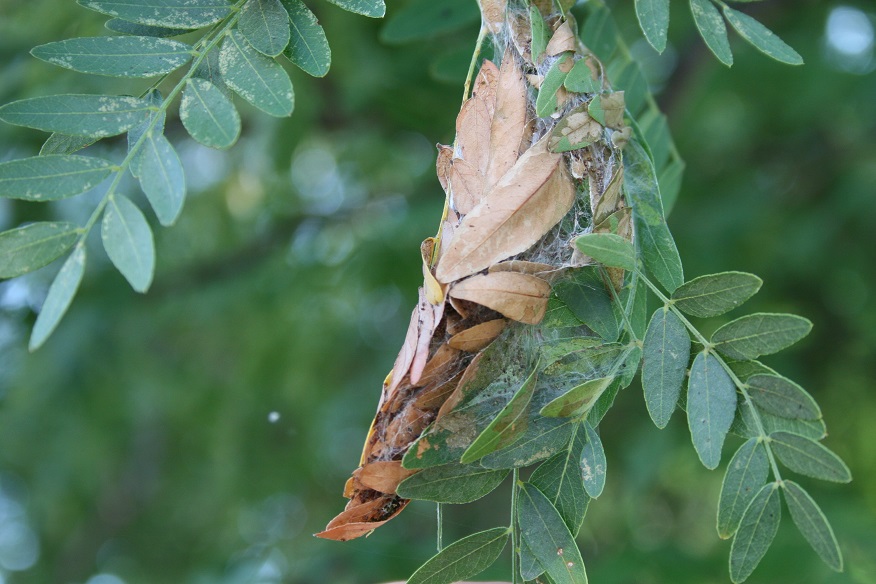What do humans and trees have in common? From the way we use water and nutrients to the way we keep ourselves cool, we have more in common than you’d think! There is big one thing we share that we need to avoid – STRESS!
We all know how stress affects us. Too much to do, too little time, too much to do, too little sleep. Over time, stress takes its toll on the body: body aches, headaches, trouble sleeping, weight gain, and a struggling immune system. Did you know that trees feel stress, too?
We all know how stress affects us. Too much to do, too little time, too much to do, too little sleep. Over time, stress takes its toll on the body: body aches, headaches, trouble sleeping, weight gain, and a struggling immune system. Did you know that trees feel stress, too?
What are stress factors for trees?
- Air Pollution – Particulates and dust can actually block leaf photosynthesis. Also, trees “sweat” just like we do, and trapped particulates can prevent water from being released from the leaves, causing the tree to overheat. This is a process called transpirational cooling. Ozone and acid rain can also damage bark and cause imbalanced soil pH. Did you know that stressed trees actually release volatile carbon compounds, thus contributing to the air pollution problem?
- Excessive Pruning – It’s a multi-faceted problem. 1. Removing too many limbs at once will cause stress. Cuts are wounds, after all. 2. Removing too many leaves at once means removing a major source of energy for the tree. 3. Aggressive pruning can introduce the tree to more sunlight than it was used to, which can damage bark.
- Soil Condition – Compaction due to things like construction and heavy foot traffic compact the soil, making it difficult for tree roots to access oxygen, which they need to be able to absorb soil nutrients. Poor top soil is also an issue, which is commonly used in new housing developments. Quality soil matters. Compost is a bonus!
- Temperature – Trees don’t often thrive in an urban environment. Think of cities as “hot islands,” where concrete and metal don’t absorb heat the way turf does.
- Light Pollution – Light pollution can impact growth responses. Trees near artificial light sources that are always on are confused! How would you like to sleep with all the lights on?
- Storm Damage – While we can’t prepare trees are storms, we can take corrective action after the damage is done. For example, if a tree branch breaks in half, knowing where to make a clean cut will affect the long term health of your tree and prevent rot. Consult a professional if your tree has suffered damage.
- Moisture – Too much or too little water stresses your trees. Much like the human body, trees are made mostly of water (75%). Leaves are 99% water! Trees need water to transport nutrients from the roots up to the canopy. A tree’s water needs change with the seasons, but at its peak in the spring, a mature red oak tree can use 100-200 gallons of water per day!
- Essential Elements – CO2, H2O, N, P, K, etc. You’ve heard it a million times, but you really should consult a professional to analyze the pH of your soil. It really does matter!
What does tree stress looks like?
- Canopy Dieback – You might notice that the tree blooms later than normal, or the leaves drop earlier in the fall. Look at the top of your tree and compare to nearby trees of the same species. The leaves might be more sparse, smaller, and paler.
- Water Sprouts – Sprouting new shoots from the trunk or main trunk is a sign of stress. These limbs are often weak and unsightly. The photo to the right is a good example of a stressed tree. The limbs are covered in new sprouts and leaves. Think of the tree as “gasping for air” in response to stress.
- Wilting Leaves – “Turgor pressure” is what helps leaves and needles hold their shape. Much like how being well-hydrated does wonders for our skin, proper moisture levels keep leaves “plump” and healthy.
- Early Fall Color – Trees displaying their fall color early in the season are no doubt under stress. Is your tree susceptible to low iron or manganese absorption? This could also be causing early fall color.
What can I do?
- Right tree, Right place – Selecting a tree that is genetically specific for your region is very important. The Nebraska Statewide Arboretum has a great list here. Also, set your tree up for success from the get-go. Choose a good location where it has room to grow, access to moisture and adequate sunlight, and little foot traffic. The tree should also be well-suited for the type of soil and water-drainage qualities. Some trees do better than others with poorly-draining soil.
- Water – Oftentimes, watering is overlooked in the winter. Winter watering is important – especially during dry spells. Wait for a warm day when you can safely hook up the hose and give your tree a good soak.
- Avoid compaction – Soil compaction reduces oxygen and water availability to the roots. You can reduce compaction by eliminating heavy traffic zones around the trunk of your tree and within the drip-line zone. You should also be mindful of heavy construction equipment driving over these areas if you plan to have construction nearby.
- Prune conservatively – Never remove more than 1/3 of biomass of a tree in a single season – and you could probably be even more conservative. Removing a large amount of the tree’s resources will send the tree into a stress response. A Certified Arborist will know how much is too much.
It never hurts to call on one of our Certified Arborists if you’re concerned that your tree is stressed. We have many solutions to encourage healthy root growth, proper nutrient absorption and more.






